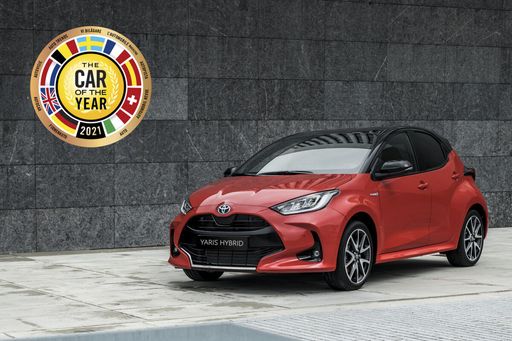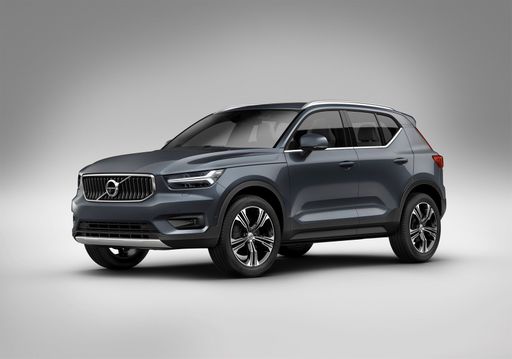Toyota Yaris vs Volvo XC40 – Differences & prices compared
Both models have their strengths – but which one suits you more?
Compare performance, efficiency, price and space directly: Toyota Yaris or Volvo XC40?
Costs and Efficiency:
Price and efficiency are key factors when choosing a car – and this is often where the real differences emerge.
Toyota Yaris has a decisively advantage in terms of price – it starts at 21900 £, while the Volvo XC40 costs 36800 £. That’s a price difference of around 14905 £.
Fuel consumption also shows a difference: Toyota Yaris manages with 3.80 L and is therefore clearly more efficient than the Volvo XC40 with 6.50 L. The difference is about 2.70 L per 100 km.
Engine and Performance:
Under the bonnet, it becomes clear which model is tuned for sportiness and which one takes the lead when you hit the accelerator.
When it comes to engine power, the Toyota Yaris has a clearly perceptible edge – offering 280 HP compared to 197 HP. That’s roughly 83 HP more horsepower.
In acceleration from 0 to 100 km/h, the Toyota Yaris is clearly perceptible quicker – completing the sprint in 5.50 s, while the Volvo XC40 takes 7.60 s. That’s about 2.10 s faster.
In terms of top speed, the Toyota Yaris performs clearly perceptible better – reaching 230 km/h, while the Volvo XC40 tops out at 180 km/h. The difference is around 50 km/h.
There’s also a difference in torque: Toyota Yaris pulls clearly perceptible stronger with 390 Nm compared to 300 Nm. That’s about 90 Nm difference.
Space and Everyday Use:
Whether family car or daily driver – which one offers more room, flexibility and comfort?
Both vehicles offer seating for 5 people.
In curb weight, Toyota Yaris is decisively lighter – 1090 kg compared to 1688 kg. The difference is around 598 kg.
In terms of boot space, the Volvo XC40 offers evident more room – 452 L compared to 286 L. That’s a difference of about 166 L.
In maximum load capacity, the Volvo XC40 performs distinct better – up to 1328 L, which is about 393 L more than the Toyota Yaris.
When it comes to payload, Volvo XC40 slight takes the win – 532 kg compared to 525 kg. That’s a difference of about 7 kg.
Who comes out on top?
Overall, the Toyota Yaris shows itself to be is largely superior and secures the title of DriveDuel Champion.
It convinces with the more balanced overall package and proves to be the more versatile choice for everyday use.
 @ Toyota Motor Corporation
@ Toyota Motor Corporation
Toyota Yaris
Toyota Yaris
The Toyota Yaris is a sprightly city hatch that packs clever packaging, surprising comfort and fuel-sipping manners into a neat, easy-to-park package. It rewards sensible buyers with low running costs, friendly ergonomics and a forgiving drive, delivered with Japanese reliability and just enough personality to make errands feel a little less ordinary.
details @ Toyota Motor Corporation
@ Toyota Motor Corporation
 @ Toyota Motor Corporation
@ Toyota Motor Corporation
Volvo XC40
The Volvo XC40 wraps Scandinavian minimalism into a compact, city-ready SUV with a premium cabin that feels both practical and grown-up. It will suit buyers who prize safety, clever storage and a composed ride, proving that small dimensions don't mean small personality.
details @ Volvo Cars
@ Volvo Cars
 @ Volvo Cars
@ Volvo Cars
 @ Volvo Cars
@ Volvo Cars
 @ Volvo Cars
@ Volvo Cars
 @ Volvo Cars
@ Volvo Cars
 @ Toyota Motor Corporation
@ Toyota Motor Corporation
|
 @ Volvo Cars
@ Volvo Cars
|
|
|
|
Costs and Consumption |
|
|---|---|
|
Price
21900 - 46700 £
|
Price
36800 - 47200 £
|
|
Consumption L/100km
3.8 - 9.5 L
|
Consumption L/100km
6.50 L
|
|
Consumption kWh/100km
-
|
Consumption kWh/100km
-
|
|
Electric Range
-
|
Electric Range
-
|
|
Battery Capacity
-
|
Battery Capacity
-
|
|
co2
87 - 215 g/km
|
co2
147 - 148 g/km
|
|
Fuel tank capacity
36 - 50 L
|
Fuel tank capacity
54 L
|
Dimensions and Body |
|
|---|---|
|
Body Type
Hatchback
|
Body Type
SUV
|
|
Seats
4 - 5
|
Seats
5
|
|
Doors
3 - 5
|
Doors
5
|
|
Curb weight
1090 - 1356 kg
|
Curb weight
1688 kg
|
|
Trunk capacity
141 - 286 L
|
Trunk capacity
452 L
|
|
Length
3940 - 3995 mm
|
Length
4425 mm
|
|
Width
1745 - 1805 mm
|
Width
1863 mm
|
|
Height
1455 - 1500 mm
|
Height
1652 mm
|
|
Max trunk capacity
935 L
|
Max trunk capacity
1328 L
|
|
Payload
289 - 525 kg
|
Payload
532 kg
|
Engine and Performance |
|
|---|---|
|
Engine Type
Full Hybrid, Petrol
|
Engine Type
Petrol MHEV
|
|
Transmission
Automatic, Manuel
|
Transmission
Automatic
|
|
Transmission Detail
CVT, Manual Gearbox, Automatic Gearbox
|
Transmission Detail
Dual-Clutch Automatic
|
|
Drive Type
Front-Wheel Drive, All-Wheel Drive
|
Drive Type
Front-Wheel Drive
|
|
Power HP
116 - 280 HP
|
Power HP
163 - 197 HP
|
|
Acceleration 0-100km/h
5.5 - 9.7 s
|
Acceleration 0-100km/h
7.6 - 8.6 s
|
|
Max Speed
175 - 230 km/h
|
Max Speed
180 km/h
|
|
Torque
390 Nm
|
Torque
265 - 300 Nm
|
|
Number of Cylinders
3
|
Number of Cylinders
4
|
|
Power kW
85 - 206 kW
|
Power kW
120 - 145 kW
|
|
Engine capacity
1490 - 1618 cm3
|
Engine capacity
1969 cm3
|
General |
|
|---|---|
|
Model Year
2024 - 2025
|
Model Year
2024
|
|
CO2 Efficiency Class
B, G
|
CO2 Efficiency Class
E
|
|
Brand
Toyota
|
Brand
Volvo
|
Is the Toyota Yaris offered with different drivetrains?
The Toyota Yaris is offered with Front-Wheel Drive or All-Wheel Drive.
The prices and data displayed are estimates based on German list prices and may vary by country. This information is not legally binding.
